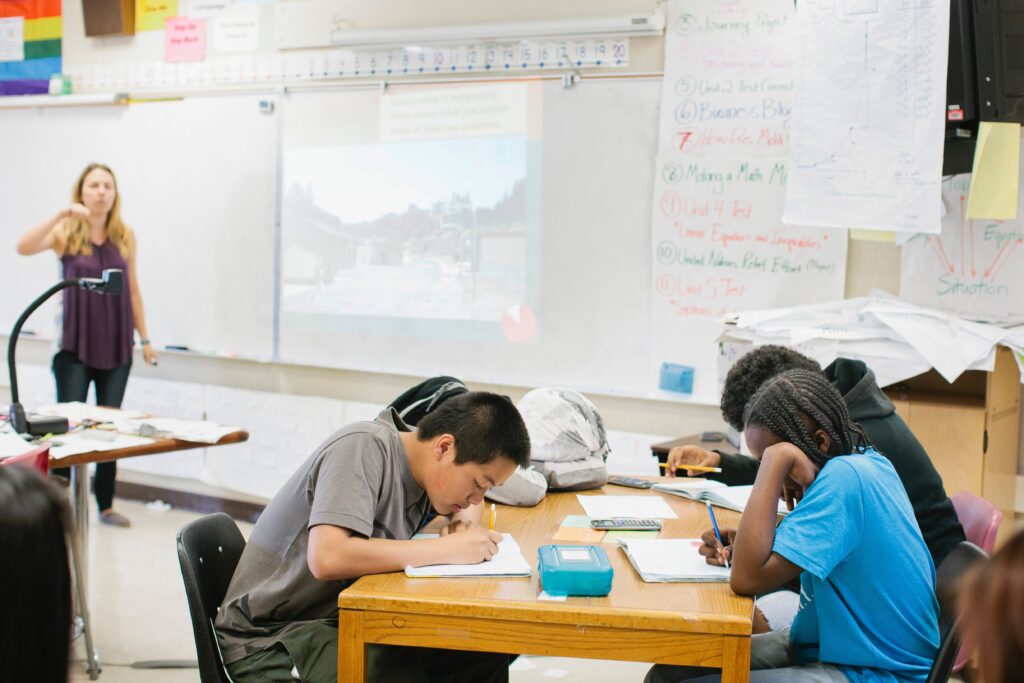
Credit: Alison Yin/EdSource
School districts nationwide are grappling with whether, how and when to teach about LGBTQ and race-related issues. Deep-seated divisions are playing out in school board meetings, local social media, and directly between parents and educators.
We have been surveying American adults’ beliefs about the potentially contested topics elementary and high school children should be learning in school since 2022. Based on our results, here are eight suggestions for those struggling to thread the needle between students learning to respectfully engage with diverse opinions, honoring parental authority and avoiding indoctrination.
Start with common ground.
Among the most surprising and hopeful results was strong bipartisan support for public schools. Adults are overwhelmingly supportive of public education, while wanting to see it improve. This bipartisan support for public schools provides a critical foundation necessary for communities to thread the needle.
Seek to understand others’ underlying beliefs.
Key to compromise is understanding others’ perspectives. We found large gaps related to core values; for example, three-quarters of Democrats think teaching children to embrace differences is a very important purpose of education, compared with just one-third of Republicans. More Republicans (81%) are worried about children feeling guilty if they learn about historical racism compared with Democrats (33%). More Republicans are worried than Democrats that learning about transgender or gay people might make children think about whether they are or want to be trans or gay. In both groups, people are somewhat more concerned about their children learning about trans people (66% of Republicans versus 23% of Democrats) than they are about lessons about gay people (55% versus 20%). We are better at listening to others’ perspectives when we feel heard ourselves.
Come up with processes for reconciling disagreement.
Adults disagree about processes for reconciling disagreement regarding the content children are learning in school. This means communities need to develop mutually agreeable consensus-building processes like public panel deliberation, advisory groups and provisions for dissent. Involving children and teens could develop their current and future civic capabilities.
Educate adults about the challenges and consequences of opting children out of classroom content.
We learned that a brief message specifying potential benefits of children learning diverse perspectives, and the logistical drawbacks of opting individual children out of lessons, substantially reduces the opt-out preference, by 15 percentage points (25%), from 57% to 42%. This approach was equally effective for Democrats and Republicans and when considering younger and older students. Educators and school boards could use this model to craft messages sharing potential challenges and benefits relevant to their own communities.
Double down on approaches with broad support, like assigning diverse texts.
Three-quarters of adults (64% of Republicans and 87% of Democrats) agree children should read books written by people from racial minority groups because they provide different experiences and perspectives. Teachers may find assigning and discussing age-appropriate books written by diverse authors to address topics of race, gender and sexuality to be an approach their communities will accept.
Support teachers in facilitating discussion of potentially contested topics.
Rand’s nationally representative survey of teachers shows many are afraid to facilitate potentially contentious discussions and lack guidance from their leadership. Curriculum and aligned professional learning should be designed to equip teachers with the skills and confidence they need to facilitate their students’ discussions of potentially contested topics. School and district leaders can also make clear their support for such discussions.
Inform and involve parents.
Transparency about how district curriculum content addresses state learning standards provides this insight. Parents will also benefit their children and themselves by learning about the diversity of perspectives within their community, and of the necessity of collaboratively resolving competing perspectives. Once processes are defined, parents, school board members and educators will need to build safeguards and respect for the system they collectively design.
Remind everyone that children will live, study, work and be citizens of diverse local, national and international communities.
Students need to learn about and how to communicate effectively with others, including those with different beliefs and backgrounds. Schools need to provide open forums allowing for sharing and evaluating both dominant and nondominant perspectives without fear of reprisal. A difficult tension for schools and teachers to manage is avoiding “indoctrination,” while maintaining norms of respect and care for others. Schools must intervene if/when students’ values negatively affect how they treat each other, indeed upholding the Golden Rule (i.e., “do unto others as you’d have done to you”)—a fundamental tenet of most religions and belief systems worldwide — requires they do.
Educating children in our pluralistic democracy is challenging. We suggest a path forward for educators, parents, and school boards, ultimately to children’s benefit.
•••
Anna Saavedra is a research scientist in the Center for Applied Research in Education within the USC Dornsife Center for Economic and Social Research. USC is a private research university located in Los Angeles.
Morgan Polikoff is a professor at the University of Southern California’s Rossier School of Education.
The opinions expressed in this commentary represent those of the authors. EdSource welcomes commentaries representing diverse points of view. If you would like to submit a commentary, please review our guidelines and contact us.


